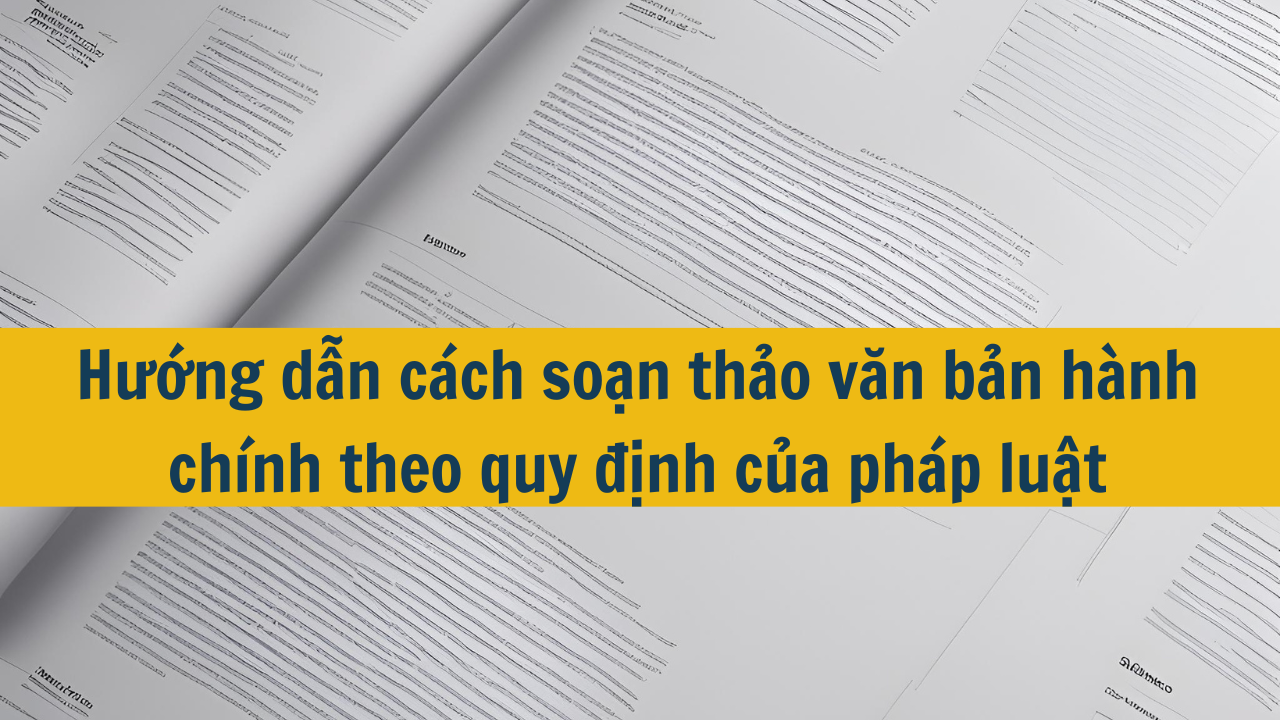 Tìm kiếm
Tìm kiếm
Chương III Nghị định 30/2020/NĐ-CP về công tác văn thư: Quản lý văn bản
| Số hiệu: | 30/2020/NĐ-CP | Loại văn bản: | Nghị định |
| Nơi ban hành: | Chính phủ | Người ký: | Nguyễn Xuân Phúc |
| Ngày ban hành: | 05/03/2020 | Ngày hiệu lực: | 05/03/2020 |
| Ngày công báo: | 17/03/2020 | Số công báo: | Từ số 283 đến số 284 |
| Lĩnh vực: | Bộ máy hành chính | Tình trạng: | Còn hiệu lực |
TÓM TẮT VĂN BẢN
Mới: Ký ban hành văn bản hành chính phải bằng mực màu xanh
Đây là nội dung nổi bật tại Nghị định 30/2020/NĐ-CP về công tác văn thư vừa được Chính phủ ban hành ngày 05/3/2020.
Theo đó, Nghị định quy định rõ, khi ký ban hành văn bản hành chính bằng giấy, thì phải dùng bút có mực màu xanh, không dùng các loại mực dễ phai.
(Trong khi đó, trước đây Nghị định 110/2004/NĐ-CP chỉ quy định khi ký không được dùng bút chì, không dùng mực đỏ hoặc mực dễ phai, dẫn đến người ký văn bản có thể dùng mực đen…).
Đối với văn bản điện tử, người có thẩm quyền sẽ thực hiện ký số.
Ngoài ra, Nghị định còn sửa đổi quy định về các loại văn bản hành chính, cụ thể bỏ các loại văn bản sau khỏi danh sách các loại văn bản hành chính: bản cam kết, giấy chứng nhận, giấy đi đường, giấy biên nhận hồ sơ.
Nghị định 30/2020/NĐ-CP có hiệu lực kể từ ngày ký ban hành.
Văn bản tiếng việt
Văn bản tiếng anh
1. Cấp số, thời gian ban hành văn bản.
2. Đăng ký văn bản đi.
3. Nhân bản, đóng dấu cơ quan, tổ chức, dấu chỉ độ mật, mức độ khẩn, (đối với văn bản giấy); ký số của cơ quan, tổ chức (đối với văn bản điện tử).
4. Phát hành và theo dõi việc chuyển phát văn bản đi.
5. Lưu văn bản đi.
1. Số và thời gian ban hành văn bản được lấy theo thứ tự và trình tự thời gian ban hành văn bản của cơ quan, tổ chức trong năm (bắt đầu liên tiếp từ số 01 vào ngày 01 tháng 01 và kết thúc vào ngày 31 tháng 12 hàng năm). Số và ký hiệu văn bản của cơ quan, tổ chức là duy nhất trong một năm, thống nhất giữa văn bản giấy và văn bản điện tử.
a) Việc cấp số văn bản quy phạm pháp luật: Mỗi loại văn bản quy phạm pháp luật được cấp hệ thống số riêng.
b) Việc cấp số văn bản chuyên ngành do người đứng đầu cơ quan quản lý ngành, lĩnh vực quy định.
c) Việc cấp số văn bản hành chính do người đứng đầu cơ quan, tổ chức quy định.
2. Đối với văn bản giấy, việc cấp số, thời gian ban hành được thực hiện sau khi có chữ ký của người có thẩm quyền, chậm nhất là trong ngày làm việc tiếp theo. Văn bản mật được cấp hệ thống số riêng.
3. Đối với văn bản điện tử, việc cấp số, thời gian ban hành được thực hiện bằng chức năng của Hệ thống.
1. Việc đăng ký văn bản bảo đảm đầy đủ, chính xác các thông tin cần thiết của văn bản đi.
2. Đăng ký văn bản
Văn bản được đăng ký bằng sổ hoặc bằng Hệ thống.
a) Đăng ký văn bản bằng sổ
Văn thư cơ quan đăng ký văn bản vào Sổ đăng ký văn bản đi. Mẫu sổ đăng ký văn bản đi theo quy định tại Phụ lục IV Nghị định này.
b) Đăng ký văn bản bằng Hệ thống
Văn bản được đăng ký bằng Hệ thống phải được in ra giấy đầy đủ các trường thông tin theo mẫu Sổ đăng ký văn bản đi, đóng sổ để quản lý.
3. Văn bản mật được đăng ký theo quy định của pháp luật về bảo vệ bí mật nhà nước.
1. Nhân bản, đóng dấu của cơ quan, tổ chức và dấu chỉ độ mật, mức độ khẩn đối với văn bản giấy
a) Văn bản đi được nhân bản theo đúng số lượng được xác định ở phần nơi nhận của văn bản.
b) Việc đóng dấu cơ quan, tổ chức và dấu chỉ độ mật, mức độ khẩn, được thực hiện theo quy định tại Phụ lục I Nghị định này.
2. Ký số của cơ quan, tổ chức đối với văn bản điện tử
Ký số của cơ quan, tổ chức được thực hiện theo quy định tại Phụ lục I Nghị định này.
1. Văn bản đi phải hoàn thành thủ tục tại Văn thư cơ quan và phát hành trong ngày văn bản đó được ký, chậm nhất là trong ngày làm việc tiếp theo. Văn bản khẩn phải được phát hành và gửi ngay sau khi ký văn bản.
2. Việc phát hành văn bản mật đi phải bảo đảm bí mật nội dung của văn bản theo quy định của pháp luật về bảo vệ bí mật nhà nước, đúng số lượng, thời gian và nơi nhận.
3. Văn bản đã phát hành nhưng có sai sót về nội dung phải được sửa đổi, thay thế bằng văn bản có hình thức tương đương. Văn bản đã phát hành nhưng có sai sót về thể thức, kỹ thuật trình bày, thủ tục ban hành phải được đính chính bằng công văn của cơ quan, tổ chức ban hành văn bản.
4. Thu hồi văn bản
a) Đối với văn bản giấy, trường hợp nhận được văn bản thông báo thu hồi, bên nhận có trách nhiệm gửi lại văn bản đã nhận.
b) Đối với văn bản điện tử, trường hợp nhận được văn bản thông báo thu hồi, bên nhận hủy bỏ văn bản điện tử bị thu hồi trên Hệ thống, đồng thời thông báo qua Hệ thống để bên gửi biết.
5. Phát hành văn bản giấy từ văn bản được ký số của người có thẩm quyền: Văn thư cơ quan thực hiện in văn bản đã được ký số của người có thẩm quyền ra giấy, đóng dấu của cơ quan, tổ chức để tạo bản chính văn bản giấy và phát hành văn bản.
6. Trường hợp cần phát hành văn bản điện tử từ văn bản giấy: Văn thư cơ quan thực hiện theo quy định tại điểm c khoản 1 Điều 25 Nghị định này.
1. Lưu văn bản giấy
a) Bản gốc văn bản được lưu tại Văn thư cơ quan và phải được đóng dấu ngay sau khi phát hành, sắp xếp theo thứ tự đăng ký.
b) Bản chính văn bản lưu tại hồ sơ công việc.
2. Lưu văn bản điện tử
a) Bản gốc văn bản điện tử phải được lưu trên Hệ thống của cơ quan, tổ chức ban hành văn bản.
b) Cơ quan, tổ chức có Hệ thống đáp ứng theo quy định tại Phụ lục VI Nghị định này và các quy định của pháp luật có liên quan thì sử dụng và lưu bản gốc văn bản điện tử trên Hệ thống thay cho văn bản giấy.
c) Cơ quan, tổ chức có Hệ thống chưa đáp ứng theo quy định tại Phụ lục VI Nghị định này và các quy định của pháp luật có liên quan thì Văn thư cơ quan tạo bản chính văn bản giấy theo quy định tại khoản 5 Điều 18 Nghị định này để lưu tại Văn thư cơ quan và hồ sơ công việc.
1. Tiếp nhận văn bản đến.
2. Đăng ký văn bản đến.
3. Trình, chuyển giao văn bản đến.
4. Giải quyết và theo dõi, đôn đốc việc giải quyết văn bản đến.
1. Đối với văn bản giấy
a) Văn thư cơ quan kiểm tra số lượng, tình trạng bì, dấu niêm phong (nếu có), nơi gửi; đối chiếu số, ký hiệu ghi ngoài bì với số, ký hiệu của văn bản trong bì. Trường hợp phát hiện có sai sót hoặc dấu hiệu bất thường, Văn thư cơ quan báo ngay người có trách nhiệm giải quyết và thông báo cho nơi gửi văn bản.
b) Tất cả văn bản giấy đến (bao gồm cả văn bản có dấu chỉ độ mật) gửi cơ quan, tổ chức thuộc diện đăng ký tại Văn thư cơ quan phải được bóc bì, đóng dấu “ĐẾN”. Đối với văn bản gửi đích danh cá nhân hoặc tổ chức đoàn thể trong cơ quan, tổ chức thì Văn thư cơ quan chuyển cho nơi nhận (không bóc bì). Những bì văn bản gửi đích danh cá nhân, nếu là văn bản liên quan đến công việc chung của cơ quan, tổ chức thì cá nhân nhận văn bản có trách nhiệm chuyển lại cho Văn thư cơ quan để đăng ký.
c) Mẫu dấu “ĐẾN” được thực hiện theo quy định tại Phụ lục IV Nghị định này.
2. Đối với văn bản điện tử
a) Văn thư cơ quan phải kiểm tra tính xác thực và toàn vẹn của văn bản điện tử và thực hiện tiếp nhận trên Hệ thống.
b) Trường hợp văn bản điện tử không đáp ứng các quy định tại điểm a khoản này hoặc gửi sai nơi nhận thì cơ quan, tổ chức nhận văn bản phải trả lại cho cơ quan, tổ chức gửi văn bản trên Hệ thống. Trường hợp phát hiện có sai sót hoặc dấu hiệu bất thường thì Văn thư cơ quan báo ngay người có trách nhiệm giải quyết và thông báo cho nơi gửi văn bản.
c) Cơ quan, tổ chức nhận văn bản có trách nhiệm thông báo ngay trong ngày cho cơ quan, tổ chức gửi về việc đã nhận văn bản bằng chức năng của Hệ thống.
1. Việc đăng ký văn bản đến phải bảo đảm đầy đủ, rõ ràng, chính xác các thông tin cần thiết theo mẫu Sổ đăng ký văn bản đến hoặc theo thông tin đầu vào của dữ liệu quản lý văn bản đến. Những văn bản đến không được đăng ký tại Văn thư cơ quan thì đơn vị, cá nhân không có trách nhiệm giải quyết, trừ những loại văn bản đến được đăng ký riêng theo quy định của pháp luật.
2. Số đến của văn bản được lấy liên tiếp theo thứ tự và trình tự thời gian tiếp nhận văn bản trong năm, thống nhất giữa văn bản giấy và văn bản điện tử.
3. Đăng ký văn bản
Văn bản được đăng ký bằng sổ hoặc bằng Hệ thống.
a) Đăng ký văn bản đến bằng sổ
Văn thư cơ quan đăng ký văn bản vào Sổ đăng ký văn bản đến. Mẫu Sổ đăng ký văn bản đến theo quy định tại Phụ lục IV Nghị định này.
b) Đăng ký văn bản đến bằng Hệ thống
Văn thư cơ quan tiếp nhận văn bản và đăng ký vào Hệ thống. Trường hợp cần thiết, Văn thư cơ quan thực hiện số hóa văn bản đến theo quy định tại Phụ lục I Nghị định này. Văn thư cơ quan cập nhật vào Hệ thống các trường thông tin đầu vào của dữ liệu quản lý văn bản đến theo quy định tại Phụ lục VI Nghị định này. Văn bản đến được đăng ký vào Hệ thống phải được in ra giấy đầy đủ các trường thông tin theo mẫu Sổ đăng ký văn bản đến, ký nhận và đóng sổ để quản lý.
4. Văn bản mật được đăng ký theo quy định của pháp luật về bảo vệ bí mật nhà nước.
1. Văn bản phải được Văn thư cơ quan trình trong ngày, chậm nhất là trong ngày làm việc tiếp theo đến người có thẩm quyền chỉ đạo giải quyết và chuyển giao cho đơn vị hoặc cá nhân được giao xử lý. Trường hợp đã xác định rõ đơn vị hoặc cá nhân được giao xử lý, Văn thư cơ quan chuyển văn bản đến đơn vị, cá nhân xử lý theo quy chế công tác văn thư của cơ quan, tổ chức. Văn bản đến có dấu chỉ các mức độ khẩn phải được trình và chuyển giao ngay sau khi nhận được. Việc chuyển giao văn bản phải bảo đảm chính xác và giữ bí mật nội dung văn bản.
2. Căn cứ nội dung của văn bản đến; quy chế làm việc của cơ quan, tổ chức; chức năng, nhiệm vụ và kế hoạch công tác được giao cho đơn vị, cá nhân, người có thẩm quyền ghi ý kiến chỉ đạo giải quyết. Đối với văn bản liên quan đến nhiều đơn vị hoặc cá nhân thì xác định rõ đơn vị hoặc cá nhân chủ trì, phối hợp và thời hạn giải quyết.
3. Trình, chuyển giao văn bản giấy: Ý kiến chỉ đạo giải quyết được ghi vào mục “Chuyển” trong dấu “ĐẾN” hoặc Phiếu giải quyết văn bản đến theo mẫu tại Phụ lục IV Nghị định này. Sau khi có ý kiến chỉ đạo giải quyết của người có thẩm quyền, văn bản đến được chuyển lại cho Văn thư cơ quan để đăng ký bổ sung thông tin, chuyển cho đơn vị hoặc cá nhân được giao giải quyết. Khi chuyển giao văn bản giấy đến cho đơn vị, cá nhân phải ký nhận văn bản.
4. Trình, chuyển giao văn bản điện tử trên Hệ thống: Văn thư cơ quan trình văn bản điện tử đến người có thẩm quyền chỉ đạo giải quyết trên Hệ thống.
Người có thẩm quyền ghi ý kiến chỉ đạo giải quyết văn bản đến trên Hệ thống và cập nhật vào Hệ thống các thông tin: Đơn vị hoặc người nhận; ý kiến chỉ đạo, trạng thái xử lý văn bản; thời hạn giải quyết; chuyển văn bản cho đơn vị hoặc cá nhân được giao giải quyết. Trường hợp văn bản điện tử gửi kèm văn bản giấy thì Văn thư cơ quan thực hiện trình văn bản điện tử trên Hệ thống và chuyển văn bản giấy đến đơn vị hoặc cá nhân được người có thẩm quyền giao chủ trì giải quyết.
1. Người đứng đầu cơ quan, tổ chức có trách nhiệm chỉ đạo giải quyết kịp thời văn bản đến và giao người có trách nhiệm theo dõi, đôn đốc việc giải quyết văn bản đến.
2. Khi nhận được văn bản đến, đơn vị hoặc cá nhân có trách nhiệm nghiên cứu, giải quyết văn bản đến theo thời hạn quy định tại quy chế làm việc của cơ quan, tổ chức. Những văn bản đến có dấu chỉ các mức độ khẩn phải được giải quyết ngay.
1. Sao y gồm: Sao y từ văn bản giấy sang văn bản giấy, sao y từ văn bản điện tử sang văn bản giấy, sao y từ văn bản giấy sang văn bản điện tử.
a) Sao y từ văn bản giấy sang văn bản giấy được thực hiện bằng việc chụp từ bản gốc hoặc bản chính văn bản giấy sang giấy.
b) Sao y từ văn bản điện tử sang văn bản giấy được thực hiện bằng việc in từ bản gốc văn bản điện tử ra giấy.
c) Sao y từ văn bản giấy sang văn bản điện tử được thực hiện bằng việc số hóa văn bản giấy và ký số của cơ quan, tổ chức.
2. Sao lục
a) Sao lục gồm: Sao lục từ văn bản giấy sang văn bản giấy, sao lục từ văn bản giấy sang văn bản điện tử, sao lục từ văn bản điện tử sang văn bản giấy.
b) Sao lục được thực hiện bằng việc in, chụp từ bản sao y.
3. Trích sao
a) Trích sao gồm: Trích sao từ văn bản giấy sang văn bản giấy, trích sao từ văn bản giấy sang văn bản điện tử, trích sao từ văn bản điện tử sang văn bản điện tử, trích sao từ văn bản điện tử sang văn bản giấy.
b) Bản trích sao được thực hiện bằng việc tạo lập lại đầy đủ thể thức, phần nội dung văn bản cần trích sao.
4. Thể thức và kỹ thuật trình bày bản sao y, sao lục, trích sao được thực hiện theo quy định tại Phụ lục I Nghị định này.
Bản sao y, bản sao lục và bản trích sao được thực hiện theo đúng quy định tại Nghị định này có giá trị pháp lý như bản chính.
1. Người đứng đầu cơ quan, tổ chức quyết định việc sao văn bản do cơ quan, tổ chức ban hành, văn bản do các cơ quan, tổ chức khác gửi đến và quy định thẩm quyền ký các bản sao văn bản.
2. Việc sao, chụp tài liệu, vật chứa bí mật nhà nước được thực hiện theo quy định của pháp luật về bảo vệ bí mật nhà nước.
Section 1. MANAGEMENT OF OUTGOING DOCUMENTS
Article 14. Steps in management of outgoing documents
1. Issue the number and time of issue of an outgoing document.
2. Register an outgoing document.
3. Replicate and put the entity's seal, mark indicating the classification or urgency level on a paper document; put the entity’s digital signature on an electronic document.
4. Issue and monitor the delivery of an outgoing document.
5. File and archive a copy of an outgoing document.
Article 15. Assigning the number and time of issuance to documents
1. The number and time of issuance of a document must accord with the chronological order and sequence of documents to be issued in the year (consecutively starting from No. 01 assigned to the document issued on January 1 and ending on December 31 each year). The sole number and code shall be assigned to a document issued by an entity in a year. If a document has both paper and electronic versions, the numbers and codes thereof must be consistent.
a) According to regulations on numbering of legislative documents, each of them must be assigned a serial number.
b) The numbering of specialized documents shall be subject to regulations imposed by heads of sectoral authorities.
c) The numbering of administrative documents shall be subject to regulations imposed by heads of entities.
2. Assigning the number and the time of issuance of a paper document must follow the competent person’s signature and must be completed by the subsequent working day at the latest. Classified documents shall be assigned particular serial numbers.
3. The number and the time of issuance of electronic documents must be assigned through the System's service.
Article 16. Registering outgoing documents
1. The registration of outgoing documents must comprehensively include required accurate information.
2. Registering a document
Each document must be registered in the register or on the System.
a) Registering a document in the register
The records department may register documents in the register of outgoing documents. The sample register of outgoing documents is given in the Appendix IV hereto.
b) Registering a document on the System
Documents registered on the System must contain all data fields of the sample register of outgoing documents that are printed out and must be bound in a registry book for custodial purposes.
3. Classified documents shall be registered under laws on protection of state secrets.
Article 17. Replication, sealing, digital signature and marking of classification or urgency levels
1. Replication, sealing, digital signature and marking of classification or urgency levels shall be required for paper documents.
a) An outgoing document must be replicated to reach the quantity of copies determined at the section indicating the recipient.
b) Placement of an entity’s corporate seal and marking of the classification or urgency level must be subject to regulations of Appendix I hereto.
2. Entity’s digital signature on an electronic document
Digital signature of an entity must be subject to regulations of Appendix I hereto.
Article 18. Issuing and monitoring the delivery of outgoing documents
1. Outgoing documents need to completely go through all required procedures of the records department and must be issued within the following working day at the latest. Urgent documents must be issued and delivered immediately after signing.
2. When issuing outgoing classified documents, regulations on their confidentiality, the number of copies issued, the time and place of receipt as set out in laws on protection of state secrets must be observed.
3. Any document that has already been issued, but contains any error, must be revised or replaced by the one existing in the equivalent form. Documents that have already been issued, but contain errors arising from their formatting structure or technique or issuance procedures, must be rectified by official letters sent by issuing entities.
4. Withdrawing documents
a) Upon receipt of notices of withdrawal of paper documents, recipients must return received documents.
b) Upon receipt of notices of withdrawal of electronic documents, recipients must abort these documents on the System and notify recipients of such abortion.
5. Issuing paper documents derived from documents bearing competent persons’ digital signatures: The records department prints out the document digitally signed by the competent person, marks the printed document with the entity's seal to make it become the primary document before issuing it.
6. Where the records department needs to issue electronic documents derived from paper documents, regulations laid down in point c of clause 1 of Article 25 hereof must be observed.
Article 19. Archiving outgoing documents
1. Filing and archiving a paper document
a) Its original must be deposited with the records department and must be sealed promptly after being issued, and must be filed in the order of registration.
b) The primary version thereof must be filed in the business dossier.
2. Storing a electronic document
a) Its original must be saved on the System of the issuing entity.
b) If an entity's System meets regulations of Appendix VI hereto and other relevant laws, it shall be used for storing electronic documents, instead of paper documents.
c) If an entity's System fails to meet regulations of Appendix VI hereto and other relevant laws, then the records department must create original paper documents under regulations of clause 5 of Article 18 herein that are filed in the department or in the business dossier.
Section 2. MANAGEMENT OF INCOMING DOCUMENTS
Article 20. Steps in management of incoming documents
1. Receiving an incoming document.
2. Register an incoming document.
3. Present and hand over an incoming document.
4. Process, monitoring and expedite the processing of an incoming document.
Article 21. Receiving incoming documents
1. Paper documents
a) The records department checks the number and state of envelope and security seal (if any) and the sender; compares the number and code written on the envelope with those written in the document put in the envelope. In case where any error or abnormality is detected, the records department must promptly alert the person responsible for dealing with such situation and notify the sender.
b) If all of incoming paper documents (including those with marks indicating classification levels) sent to the entity are subject to the requirement of registration with the records department, their envelopes must be opened and documents put in these envelopes must be marked "ARRIVED". If a document is addressed correctly to an individual or division of an entity, the entity's records department must hand it over to the recipient (without opening its envelope). If a document put in an envelope addressed correctly to an individual is about the entity’s business, the receiving individual must hand it back to the records department to have it registered.
c) The sample "ARRIVED” mark shall be subject to regulations of the Appendix IV hereto.
2. Electronic documents
a) The records department must check the authenticity and integrity of an electronic document, and have it received on the System.
b) If an electronic document fails to meet regulations laid down in point a of this clause, or is misaddressed, the receiving entity must bounce it back to the sending entity on the System. In case where any error or abnormality is detected, the records department must promptly alert the person responsible for dealing with such situation and notify the sender.
c) The receiving entity must promptly notify the sending entity that the document is already received within the day of receipt through the System.
Article 22. Registering incoming documents
1. In order to gain registration for an incoming document, full, clear and accurate information required for the sample register of incoming documents or the input data used for management of incoming documents must be provided. If any incoming document is not registered with the records department, the entity shall not be responsible for it, except incoming documents that may be registered in other way as prescribed by laws.
2. The arrival numbers of incoming documents are determined in the chronological order and sequence of receipt of these documents within a year. The arrival number of the paper incoming document must be consistent with that of the electronic incoming document.
3. Registering documents
Each document must be registered in the register or on the System.
a) Registering an incoming document in the register
The records department may register the incoming document in the register of incoming documents. The sample register of incoming documents is given in the Appendix IV hereto.
b) Registering an incoming document on the System
The records department receives the document and records it on the System. Where necessary, the records department can digitize the incoming document, subject to regulations of Appendix I hereto. The records department can update the System by completing fields indicating input data used for management of incoming documents according to Appendix VI hereto. Incoming documents registered on the System must contain all data fields of the sample register of incoming documents that are printed out, must be signed and bound in a registry book for custodial purposes.
4. Classified documents shall be registered under laws on protection of state secrets.
Article 23. Presenting and handing over incoming documents
1. Incoming documents must be presented by the records department within a day, or on the following working day at the latest, to the person having competence in processing these documents, and must be forwarded to the unit or individual assigned to process them. In case where the unit or individual assigned to process documents is clearly defined, the records department must forward them to that unit or individual according to the entity’s rules and regulations on management of records. Incoming documents with marks indicating urgency levels must be presented and forwarded immediately after receipt. Forwarding or handover of documents must conform to requirements concerning accuracy and confidentiality of their content.
2. Based on the content of an incoming document, working rules and regulations of an entity; functions, duties and working plans assigned to specific units or individuals, the competent person may record his/her instructions about how to process that document. If a document relates to multiple units or individuals, the presiding and cooperating unit or individual, and the processing duration, must be clarified.
3. Present, forward or hand over a paper document: Instructions for processing the document must be recorded in the “forwarded” section in the “ARRIVED" mark or the document processing slip according to the sample one given in the Appendix IV hereto. After receipt of instructions for processing the document from the competent person, the incoming document is moved back to the records department to add more information for registration, and then handed over to the unit or individual assigned to process the document. The unit or individual must sign to confirm the receipt of the paper document that is forwarded or handed over.
4. Present, forward or hand over an electronic document on the System: The records department must present the electronic document to the person having competence in giving instructions for processing documents on the System.
The competent person must record his/her instructions for processing that incoming document on the System and enter the following information into the System: The receiving unit or individual; instructions and processing status; processing duration; forwarding or handover of the document to the unit or individual assigned to process the document. In case where an electronic document is sent along with a paper document, the records department must present the former on the System and forward the latter to the unit or individual assigned by the competent person to take charge of processing the document.
Article 24. Processing, monitoring and expediting the processing of incoming documents
1. The entity’s head is responsible for giving instructions for timely processing of incoming documents and assigning the person charged with monitoring and expediting the processing of incoming documents.
2. Upon receipt of incoming documents, the unit or individual must examine and processing them by the deadline prescribed in the entity’s work rules and regulations. Incoming documents with marks indicating urgency levels must be immediately processed.
Section 3. DUPLICATION OF DOCUMENTS
Article 25. Forms of duplication
1. True copies, including: True paper copies of paper documents; true paper copies of electronic documents; true electronic copies of paper documents.
a) True paper copies of paper documents are made by photocopying original paper documents or primary paper documents.
b) True paper copies of electronic documents are made by printing original electronic documents.
b) True electronic copies of paper documents are made by digitalizing paper documents and digitally signing by entities.
2. Exemplified copies
a) Exemplified copies, including: Exemplified paper copies of paper documents; exemplified electronic copies of paper documents; exemplified paper copies of electronic documents.
b) Exemplified copies are made by printing or photocopying true copies.
3. Extracts
a) Extracts, including: Paper extracts from paper documents; electronic extracts from paper documents; electronic extracts from electronic documents; paper extracts from electronic documents.
b) Extracts are taken from documents by completely reproducing their formatting structures and contents.
4. Formatting structures and techniques of true copies, exemplified copies and extracts shall be subject to regulations laid down in Appendix I hereto.
Article 26. Legal value of copies and extracts
True copies, exemplified copies and extracts conforming to regulations laid down herein Appendix I hereto shall have legal value equivalent to primary documents.
Article 27. Duplication authority
1. The entity’s head shall be accorded authority to decide the duplication of documents that it issues, documents that other entity sends it, and regulate the authority to sign copies of documents.
2. Replicating, photocopying documents or objects containing state secrets shall be subject to laws on protection of state secrets.
Cập nhật
Bài viết liên quan
Mẫu công văn giải trình không tham gia BHXH mới nhất 2025

Mẫu công văn giải trình không tham gia BHXH mới nhất 2025
Trong quá trình hoạt động, một số doanh nghiệp hoặc cá nhân có thể gặp tình huống cần giải trình lý do không tham gia bảo hiểm xã hội (BHXH) bắt buộc theo quy định. Việc này thường xảy ra khi có yêu cầu từ cơ quan BHXH hoặc trong các đợt kiểm tra, rà soát. Để đảm bảo quyền lợi và tránh vi phạm pháp luật, doanh nghiệp hoặc người lao động cần chuẩn bị một công văn giải trình rõ ràng, đầy đủ và đúng quy định. Bài viết dưới đây sẽ cung cấp mẫu công văn giải trình không tham gia BHXH mới nhất năm 2025 và hướng dẫn chi tiết cách soạn thảo, nộp công văn để đáp ứng yêu cầu của cơ quan BHXH. 18/01/2025Khi báo cáo kết quả thử việc theo Nghị định 30 cần có nội dung gì?

Khi báo cáo kết quả thử việc theo Nghị định 30 cần có nội dung gì?
Báo cáo kết quả thử việc theo Nghị định 30 là một công việc quan trọng không chỉ giúp đánh giá năng lực công chức mà còn định hướng cho sự phát triển của họ trong tương lai. Một báo cáo rõ ràng, chi tiết và có tính xây dựng sẽ góp phần nâng cao chất lượng đội ngũ công chức trong các cơ quan nhà nước, đồng thời tạo ra môi trường làm việc tích cực, chuyên nghiệp. Việc thực hiện đầy đủ các nội dung cần thiết sẽ không chỉ đáp ứng yêu cầu của pháp luật mà còn góp phần nâng cao hiệu quả công tác của từng cá nhân trong tổ chức. 16/11/2024Cách ký tên, đóng dấu khi soạn thảo văn bản hành chính

Cách ký tên, đóng dấu khi soạn thảo văn bản hành chính
Việc ký tên và đóng dấu trên văn bản hành chính là một quy trình quan trọng, đảm bảo tính pháp lý và hiệu lực của văn bản. Để thực hiện đúng quy định, xin mời xem bài viết dưới đây. 12/11/2024Dấu treo là gì? Cách đóng dấu treo đúng quy định

Dấu treo là gì? Cách đóng dấu treo đúng quy định
Dấu treo là thuật ngữ thường được sử dụng để chỉ việc con dấu được đóng lên trang đầu, trùm lên một phần tên cơ quan, tổ chức hoặc tên của phụ lục đính kèm văn bản, hợp đồng (bản chính). 10/11/2024Hướng dẫn cách soạn thảo văn bản hành chính theo quy định của pháp luật

Hướng dẫn cách soạn thảo văn bản hành chính theo quy định của pháp luật
Các loại văn bản hành hành chính gồm những loại nào? Việc soạn thảo văn bản hành chính mới nhất được quy định thế nào? 05/11/2024Hướng dẫn chi tiết cách trình bày thể thức văn bản hành chính

Hướng dẫn chi tiết cách trình bày thể thức văn bản hành chính
Thể thức văn bản hành chính là một quy định bắt buộc đối với tất cả các cơ quan, tổ chức và cá nhân khi soạn thảo văn bản hành chính. Việc tuân thủ đúng thể thức không chỉ đảm bảo tính chuyên nghiệp, chính xác mà còn tạo điều kiện thuận lợi cho việc lưu trữ, tra cứu và xử lý công việc. 05/11/2024Giấy xác nhận lương là gì? Mẫu giấy xác nhận lương mới nhất năm 2024?

Giấy xác nhận lương là gì? Mẫu giấy xác nhận lương mới nhất năm 2024?
Giấy xác nhận lương là gì? Mẫu giấy xác nhận lương mới nhất năm 2024? 04/11/2024Danh mục hồ sơ là gì? Thành phần của danh mục hồ sơ

Danh mục hồ sơ là gì? Thành phần của danh mục hồ sơ
Danh mục hồ sơ là gì? Thành phần của danh mục hồ sơ 04/11/2024Quy định trực tiếp là gì? Mẫu Quyết định quy định trực tiếp

Quy định trực tiếp là gì? Mẫu Quyết định quy định trực tiếp
Quy định trực tiếp là gì? Mẫu Quyết định quy định trực tiếp 04/11/2024Văn bản hành chính là gì? Việc cấp số văn bản hành chính sẽ do ai quyết định theo quy định hiện nay?


 Nghị định 30/2020/NĐ-CP về công tác văn thư (Bản Word)
Nghị định 30/2020/NĐ-CP về công tác văn thư (Bản Word)
 Nghị định 30/2020/NĐ-CP về công tác văn thư (Bản Pdf)
Nghị định 30/2020/NĐ-CP về công tác văn thư (Bản Pdf)